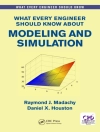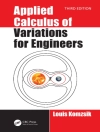This book provides working tools for the study and design of nonlinear dynamical systems applicable in physics and engineering. It offers a broad-based introduction to this challenging area of study, taking an applications-oriented approach that emphasizes qualitative analysis and approximations rather than formal mathematics or simulation. The author, an internationally recognized authority in the field, makes extensive use of examples and includes executable Mathematica notebooks that may be used to generate new examples as hands-on exercises. The coverage includes discussion of mechanical models, chemical and ecological interactions, nonlinear oscillations and chaos, forcing and synchronization, spatial patterns and waves.
Key Features:
- Written for a broad audience, avoiding dependence on mathematical formulations in favor of qualitative, constructive treatment
- Extensive use of physical and engineering applications
- Incorporates Mathematica notebooks for simulations and hands-on self-study
- Provides a gentle but rigorous introduction to real-world nonlinear problems
- Features a final chapter dedicated to applications of dynamical systems to spatial patterns
The book is aimed at student and researchers in applied mathematics and mathematical modelling of physical and engineering problems. It teaches to see common features in systems of different origins, and to apply common methods of study without losing sight of complications and uncertainties related to their physical origin.












